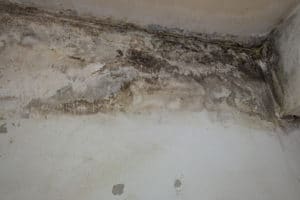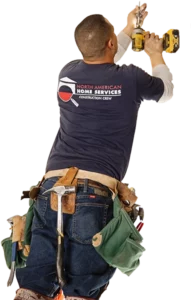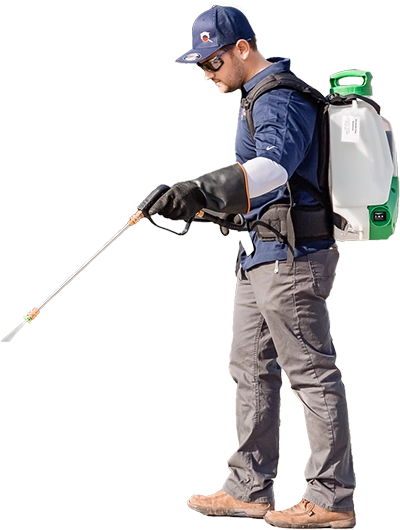Mold is a relatively common problem for many homeowners. Mold thrives in cool temperatures and dark spaces, a combination present in attics and basements, and also common areas like bathrooms. Mold can enter a home in one of two ways: it is either borne through the air, or carried into the home via surfaces like clothes and/or pets. You know that you have a mold issue even if signs of mold are not visible. If the level of mold spores found in your house’s air is greater than normal outdoor levels, you have a mold issue that must be remediated.
If left untreated mold can cause health issues for you and your family. Generally speaking, most symptoms caused by mold are not life threatening—symptoms include coughing, sneezing, itchy eyes, and skin irritation. If you have a severe mold problem, or if you have underlying health conditions, mold can be especially dangerous, as it can cause immune disorders, internal organ damage, and cancer.
If you suspect that you have mold in your home, or if an inspection found that you have mold in your home, it is critically important to eliminate it immediately.
The easiest way to detect mold is a visual inspection and smell test.
Mold has a distinct appearance. Common mold is white, black, brown, purple and/or yellow in appearance. They often show up in clusters, as spots and circles.

Extensive mold damage caused by a water leak.
Mold requires three specific conditions for survival. First, it must have a food source. Dust and dirt provide enough sustenance for mold to survive for weeks on end. A house that is regularly cleaned can decrease the odds of mold survival. Along with food, mold also flourishes in cool to warm temperatures that range from 70 to 80 degrees Fahrenheit. Household temperatures usually fall within this range. Lastly, mold needs moisture to survive. High humidity is central to mold growth. Here are some common places where moisture, and mold, can be found:
- Window sills
- Underneath sinks
- Around your refrigerator
- Bathrooms and showers
- Closets
- Laundry area
- HVAC
- Basement walls and flooring
Many times, mold can develop out of plain sight. Often, mold gives off a distinct odor best described as a musty, earthy smell. If you’ve ever been in a damp forest and passed by rotting wood then you’re familiar with this smell. If any part of your home has this distinct smell, try to locate the culprit by doing a cursory, visual search. If you do find mold spots, it’s best to contact a mold specialist. Even if you don’t locate mold spots, pay close attention to the smell. If it persists, contact a mold specialist, as mold can be microscopic. A mold specialist can thoroughly investigate your home by checking in hard-to-reach areas, like underneath carpet and in-between wall trim.
When detecting for the presence of mold, always wear personal protective equipment. Latex or rubber gloves and a face mask will prevent exposing yourself to harmful mold spores.
Mold home detection kits are affordable and easy to use.
If you have suspicions your home has high traces of mold then a home detection kit may be your answer. These kits can be easily found at your local hardware store or online for purchase, price ranges from $10-$70. There are a couple ways home test kits work, most test the air by collecting the particles in rooms where you detect mold while others require you to swab the surface of potential mold growth. Some kits will require a bit of time to wait for results, other kits require homeowners to mail samples to their lab and await results. Even if you don’t opt for a high-end testing kit, be sure to purchase a kit that tells you if you have high levels of mold.
While mold home test kits may give homeowners an answer, results are not always accurate. Even if homeowners find high amounts of mold they still have to locate and treat it. In many cases, people save their money on test kits and seek a professional inspector and mold remediator instead.
Professional mold inspections are thorough and proven.
Hiring a trained and certificated mold inspector will give you the best chance of finding and eliminating mold. Inspectors have put in hundreds to thousands of hours both in the field and the classroom to properly inspect and identify mold. They can determine the type of mold present, figure out if the mold is confined to one area or has spread throughout the home, and provide the best elimination methods.
While a home testing kit is more of a DIY approach to detecting mold, hiring a professional right when you sense a mold issue can put your mind at ease. This way you’ll have the benefit of knowing that your home is safe, or if there is a mold problem, a proven plan to treat and prevent mold.
Preventing mold from growing in your home.
Given the right conditions, mold can start growing within 24 to 48 hours. The most important thing to do is to ensure your home remains dry. Mold can often be an indicator that something else is wrong with your home, such as roof damage or leaky pipes. A routine home inspection can help determine if essential functions of your home are damaged, faulty, or out-of-date.
At the first sign of water damage or water leaking, dry the area thoroughly and spot check in the following days to make sure it’s dry and no mold has appeared. If your home has substantial water damage it would be wise to seek professional consultation to treat and prevent further damage.
Besides water damage, be sure to keep your home clean. Removing dust and dirt from your home reduces the likelihood that mold will appear. Properly disinfecting places like the kitchen, bathroom, and basement with home cleaning supplies will destroy mold cells that are found in the area, preventing them from potentially spreading.
Mold is a serious problem that can lead to health issues. It’s always best to eliminate mold immediately after it has been detected. You can detect mold either by purchasing a home testing kit, or hiring a mold specialist. To prevent mold, keep your house clean and home humidity levels low. And if you’re in need of a home inspection, the professionals at North American Home services are here to help!




